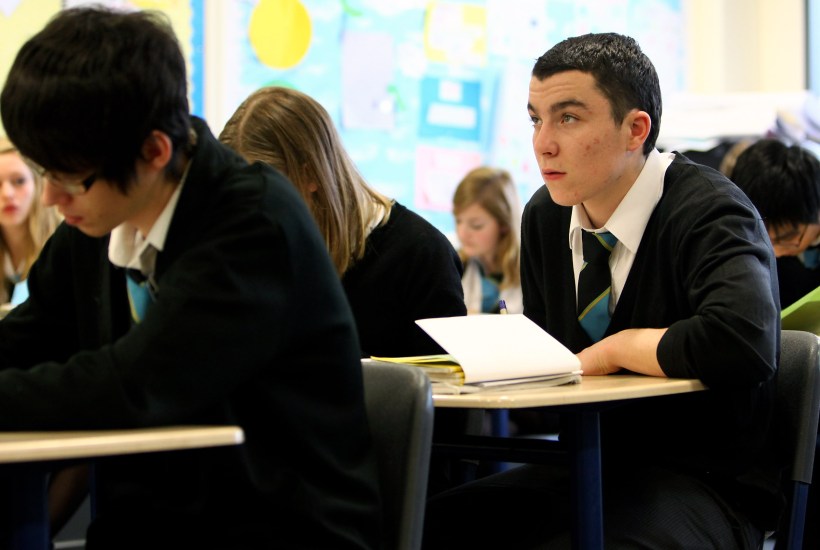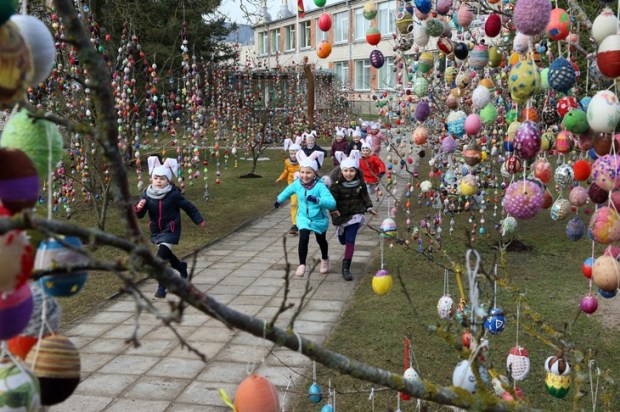Six years ago, I graduated from Normanhurst Boys High School, a selective school in New South Wales. I was awarded an HSC result that far exceeded my expectations (and probably the expectations of those around me). This outcome was the product of – or so I like to believe – hard work, and a wealth of encouragement and support from my teachers, peers, and family. Equally, there is little doubt in my mind that my ATAR score would have been significantly lower had I not received extensive tutoring during my schooling career. The question of whether private tutoring effectively prepared me for life beyond the HSC is also a matter of debate. Don’t get me wrong – I am incredibly grateful to my parents that they spared no expense in what they thought was best for me. At the same time, the volume of agitation regarding education policy and, in particular, opportunities in relation to the entry of students into selective schools, raises a number of points for reflection.
Recently, New South Wales Education Minister Rob Stokes’ announced his ambitions to “ensure that the selective system does not create a rigid, separated public system.” I’m thankful that a problem has been identified and grateful that both policy-makers and parents seek to improve public school outcomes for the next generation. But too often, a misinformed understanding of what exactly is broken in the system beleaguers the solution.
The principle behind the selective schooling system was to ensure the provision of opportunities to those students who displayed remarkable academic potential but were otherwise unable to achieve selection into prestigious public schools. There does not appear to be strong grounds for the dismantling of the selective schools system, and I agree that selective schools do present opportunities to students from socially disadvantaged backgrounds. These are the types of students we ought to be making provision for. No one is denying this. The situation is complicated, however, by the fact that successful entry into selective schools is increasingly reliant on years of tuition through private tutoring colleges. This raises justifiable concern that currently, selective schools are overrepresented by the sons and daughters of high net-worth individuals who spend significant sums of money on the private tuition of their children. This dynamic presents a number of problems.
Firstly, such a system is unfairly advantaged towards those students whose parents are financially capable of paying for expensive tutoring services. Secondly, students preparing for the Selective Schools Entry Test tend to score highly by virtue of their ability to recite what they’ve rote-learned, and not necessarily because they are academically gifted. Thirdly, and corollary to the third point, is the question of whether current testing is a useful metric in determining academic ability and the potential for educational outcomes for students. We will return to these points shortly.
It is no secret that Asian students are enormously overrepresented in our selective schools, and neither is it difficult to see why. I was impressed by the thoughts of one HSC graduate who penned an article titled, “I got an ATAR of 99.85, but the true high achievers are my parents.” In his article, Hu captures the heart of the Asian migrant experience: “to provide the next generation (me) with the opportunity for a bright future.” For these families, the highest priority in the household is often the education of their children, and parents will afford their children every opportunity to set them up for success – even if they have nothing to spend, or even if it means picking up a second or third job. Here, “success” is largely coloured by Asian perceptions of financial security and status, and often parents will jokingly (but seriously) tell their children that the only vocations available are the “Big Four”: medicine, law, business, or education.
The preoccupation with these vocations raises an important that need be addressed in relation to the role that selective schools play in our education system. Namely, these are vocations that require a university education, and it would appear that there are strong efforts on the parts of Asian parents to send their children to selective schools for the express purpose of having their children attend university. I imagine that for the majority of non-Asian parents whose children attend selective schools, the sentiments would largely remain the same, especially considering how accessible universities have become since the 1980s. Of course, I am willing to concede that there are exceptions to the rule – there will be some selective schools students who do not go onto higher education, and arguably, more power to them. The reality, however, appears to be that most students from most selective schools will go on to study at a university level.
But this is perhaps where the stars misalign. The crucial priority in any educational system is to improve its capacity to develop young people into effective members and contributors to a rich and diverse marketplace. In universities, the number one commodity is provocative and innovative thought. With this vision in mind, students must be taught to communicate well, to discriminate between perspectives and use information in creative ways, and also be well equipped to navigate through an increasingly fluid workforce.
Private tutoring colleges, by virtue of their business model, do not make it a high priority to accommodate these needs. They are paid by parents to teach according to syllabi, to maximise the marks in their student-clients, and what happens after the job is done is (pardon the pun) none of their business. There seems to be merit in selective schools placing a high priority on drawing out the potential in those students who display an aptitude for analysis and argumentation, and developing their pupils with a view to succeeding in university – not just in the HSC. The question that remains is whether the Selective High Schools Placement Test discriminates between those students who display these natural aptitudes, or those students who have simply been tutored to “game the system.”
This has led to politicians on both sides of the Labor-Liberal fence to make the suggestion to open up selective schools to local students, and conversely to have selective streams in comprehensive schools. Though I sympathise with these good intentions, I find it difficult to see its merits. Schools such as Killara High, Epping Boys, and Cherrybrook Technology have already been set as the battlegrounds for aggressive competition between young families to live in their catchment areas.
It would be naïve to think that these same tensions would not be replicated in and around schools such as James Ruse, North Sydney Boys, or Hornsby Girls, and again those households from low socio-economic backgrounds are expected to lose out. Further to this, partially selective schools such as Chatswood High School and Ryde Secondary College only have separate selective and comprehensive streams up until students reach their senior year, which leaves both parents and students scratching their heads as to whether it makes any tangible difference come the HSC. Anecdotally in response to this, it becomes common practice for many students in the selective components of these schools to then apply to transfer out from these schools to a more competitive school.
It is clear to see that there is no silver bullet, no quick fix to this problem. With that being said, there does appear to be a few points from which effective education policy can form.
Firstly, with respect to the entry criterion for students into selective schools, reforms must be made to testing and examination in such a way that it ceases to be worthwhile for students to simply be taught the 3Rs of retention, recognition, and regurgitation. I concede that I am no expert in pedagogy, and am therefore unsure what yardsticks ought to be employed in determining academic ability, but the simple fact that a $1 billion ‘shadow education system’ now accounts for a significant portion of Australian household spending seems to be a symptom of a problem that needs addressing.
Secondly, there also appears to be the perpetual issue of supply and demand. More selective schools allows for greater opportunity for students with academic potential to develop among peers of similar ability, and also increases mobility in and out of selective schools as children mature intellectually. Part of the problem, however, seems to be that although Sydney’s population continues to grow above the national average, planning and development often takes place with little to no consultation to the infrastructure requirements of local communities, especially the roads and the availability of schools to take in students.
Thirdly, and perhaps most significantly, there is a doubtful correlation between performance in high school and performance in university (with the exception of STEM subjects). Beyond the HSC, success is rarely quantified in your ATAR, but rather in how much you put in to achieve outcomes, and this is usually what separates the great from the good. Importantly, a student’s aptitude and appetite for hard work and academic rigour are largely inherited characteristics – that is, children of intelligent and industrious households are more likely to replicate the traits of family members and those closest to them.
The question that parents need to ask themselves is whether they are more selective in their involvement with their children’s lives, or more selective about how they can outsource their responsibilities as the primary educators of their children to others.
Almost two centuries ago, Horace Mann, one of many pioneers of promoting public education, wrote the following sentiment: “A teacher who is attempting to teach without inspiring the pupil with a desire to learn is hammering on cold iron.” It is a beautiful statement. But the responsibility to inspire our children and therein provide the highest quality education falls heavier upon the shoulders of parents than it does our policy-makers. Forget the HSC; this is the real test.
Got something to add? Join the discussion and comment below.
Got something to add? Join the discussion and comment below.
Get 10 issues for just $10
Subscribe to The Spectator Australia today for the next 10 magazine issues, plus full online access, for just $10.


























Comments
Don't miss out
Join the conversation with other Spectator Australia readers. Subscribe to leave a comment.
SUBSCRIBEAlready a subscriber? Log in